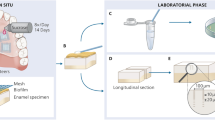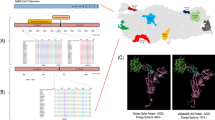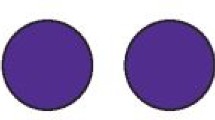Abstract
Aim:
To prepare a clinical-grade anti-caries DNA vaccine pGJA-P/VAX and explore its immune effect and protective efficacy against a cariogenic bacterial challenge.
Methods:
A large-scale industrial production process was developed under Good Manufacturing Practices (GMP) by combining and optimizing common unit operations such as alkaline lysis, precipitation, endotoxin removal and column chromatography. Quality controls of the purified bulk and final lyophilized vaccine were conducted according to authoritative guidelines. Mice and gnotobiotic rats were intranasally immunized with clinical-grade pGJA-P/VAX with chitosan. Antibody levels of serum IgG and salivary SIgA were assessed by an enzyme-linked immunosorbent assay (ELISA), and caries activity was evaluated by the Keyes method. pGJA-P/VAX and pVAX1 prepared by a laboratory-scale commercial kit were used as controls.
Results:
The production process proved to be scalable and reproducible. Impurities including host protein, residual RNA, genomic DNA and endotoxin in the purified plasmid were all under the limits of set specifications. Intranasal vaccination with clinical-grade pGJA-P/VAX induced higher serum IgG and salivary SIgA in both mice and gnotobiotic rats. While in the experimental caries model, the enamel (E), dentinal slight (Ds), and dentinal moderate (Dm) caries lesions were reduced by 21.1%, 33.0%, and 40.9%, respectively.
Conclusion:
The production process under GMP was efficient in preparing clinical-grade pGJA-P/VAX with high purity and intended effectiveness, thus facilitating future clinical trials for the anti-caries DNA vaccine.
Similar content being viewed by others
Log in or create a free account to read this content
Gain free access to this article, as well as selected content from this journal and more on nature.com
or
References
Bowen WH . Do we need to be concerned about dental caries in the coming millennium? Crit Rev Oral Biol Med 2002; 13: 126–31.
Taubman MA, Nash DA . The scientific and public-health imperative for a vaccine against dental caries. Nat Rev Immunol 2006; 6: 555–63.
Smith DJ . Dental caries vaccines: prospects and concerns. Crit Rev Oral Biol Med 2002; 13: 335–49.
Gregory RL . Dental caries vaccines: science and status. Compendium, (1994 OCT) 15 (10) 1282, 1284, 1286 passim;quiz 1294.
Russell MW, Childers NK, Michalek SM, Smith DJ, Taubman MA . A Caries Vaccine? The state of the science of immunization against dental caries. Caries Res 2004; 38: 230–5.
Cui Z . DNA Vaccine. Adv Genet 2005; 54: 257–89.
Xu QA, Yu F, Fan MW, Bian Z, Chen Z, Fan B, et al. Immunogenicity and persistence of a targeted anti-caries DNA vaccine. J Dent Res 2006; 85: 915–8.
Zhang F, Li YH, Fan MW, Jia R, Xu QA, Guo JH, et al. Enhanced efficacy of CTLA-4 fusion anti-caries DNA vaccines in gnotobiotic hamsters. Acta Pharmacol Sin 2007; 28: 1236–42.
Xu QA, Yu F, Fan MW, Bian Z, Chen Z, Peng B, et al. Protective efficacy of a targeted anti-caries DNA plasmid against cariogenic bacteria infections. Vaccine 2007; 25: 1191–5.
Jia R, Guo JH, Fan MW, Bian Z, Chen Z, Fan B, et al. Immunogenicity of CTLA4 fusion anti-caries DNA vaccine in rabbits and monkeys. Vaccine 2006; 24: 5192–200.
Liu C, Fan M, Xu Q, Li Y . Biodistribution and expression of targeted fusion anti-caries DNA vaccine pGJA-P/VAX in mice. J Gene Med 2008; 10: 298–305.
Robertson J, Griffiths E . WHO guidelines for assuring the quality of DNA vaccines. Biologicals 1998; 26: 205–12.
FDA. Guidance for Industry: Considerations for Plasmid DNA Vaccines for Infectious Disease Indications. Biotechnology Law Report 2007; 26: 641–8.
FDA. Points to consider on plasmid DNA vaccine for preventive infectious disease indications. 1996.
SFDA. Guidelines for Preclinical Study of Prophylactic DNA Vaccine. 2003.
WHO. Guidelines for assuring the quality and nonclinical safety evaluation of DNA vaccines. WHO Technical Report 2007; Series No 941.
WHO. Good manufacturing practices for pharmaceutical products. WHO Technical Report 2003; Series No 908.
WHO. Good manufacturing practices for biological products. WHO Technical Report 1992; Series No 822.
Stuart CA, Griffin AM, Baker ME . Relationships of Coliform Organisms. J Bacteriol 1938; 36: 391–410.
Diogo MM, Queiroz JA, Monteiro GA, Martins SA, Ferreira GN, Prazeres DM . Purification of a cystic fibrosis plasmid vector for gene therapy using hydrophobic interaction chromatography. Biotechnol Bioeng 2000; 68: 576–83.
Diogo MM, Ribeiro SC, Queiroz JA, Monteiro GA, Tordo N, Perrin P, et al. Production, purification and analysis of an experimental DNA vaccine against rabies. J Gene Med 2001; 3: 577–84.
ScholZ E . Karl Fischer Titration: determination of water. Berlin-Heidelerg: Springer-Verlag; 1984.
May JC, Grim E, Wheeler RM, West J . Determination of residual moisture in freeze-dried viral vaccines: Karl Fischer gravimetric and thermogravimetric methodologies. J Biol Stand 1982; 10: 249–59.
Li YH, Fan MW, Bian Z, Chen Z, Zhang Q, Yang HR . Chitosan-DNA microparticles as mucosal delivery system: synthesis, characterization and release in vitro. Chin Med J (Engl) 2005; 118: 936–41.
Navia JM . Animal models in dental research. Tuscaloosa: University of Alabama Press; 1977. p 280–307.
Zhang P, Jespersgaard C, Lamberty-Mallory L, Katz J, Huang Y, Hajishengallis G, et al. Enhanced immunogenicity of a genetic chimeric protein consisting of two virulence antigens of Streptococcus mutans and protection against infection. Infect Immun 2002; 70: 6779–87.
Keyes PH . Dental caries in the molar teeth of rats. II. A method for diagnosing and scoring several types of lesions simultaneously. J Dent Res 1958; 37: 1088–99.
Urthaler J, Ascher C, Wohrer H, Necina R . Automated alkaline lysis for industrial scale cGMP production of pharmaceutical grade plasmid-DNA. J Biotechnol 2007; 128: 132–49.
Quaak SG, van den Berg JH, Toebes M, Schumacher TN, Haanen JB, Beijnen JH, et al. GMP production of pDERMATT for vaccination against melanoma in a phase I clinical trial. Eur J Pharm Biopharm 2008; 70: 429–38.
Magalhaes PO, Lopes AM, Mazzola PG, Rangel-Yagui C, Penna TC, Pessoa A Jr . Methods of endotoxin removal from biological preparations: a review. J Pharm Pharm Sci 2007; 10: 388–404.
Montbriand PM, Malone RW . Improved method for the removal of endotoxin from DNA. J Biotechnol 1996; 44: 43–6.
Ferreira GN, Cabral JM, Prazeres DM . Development of process flow sheets for the purification of supercoiled plasmids for gene therapy applications. Biotechnol Prog 1999; 15: 725–31.
Horn NA, Meek JA, Budahazi G, Marquet M . Cancer gene therapy using plasmid DNA: purification of DNA for human clinical trials. Hum Gene Ther 1995; 6: 565–73.
Stadler J, Lemmens R, Nyhammar T . Plasmid DNA purification. J Gene Med 2004; 6 Suppl 1: S54–66.
Ferreira GN, Monteiro GA, Prazeres DM, Cabral JM . Downstream processing of plasmid DNA for gene therapy and DNA vaccine applications. Trends Biotechnol 2000; 18: 380–8.
Jespersgaard C, Hajishengallis G, Huang Y, Russell MW, Smith DJ, Michalek SM . Protective immunity against Streptococcus mutans infection in mice after intranasal immunization with the glucan-binding region of S mutans glucosyltransferase. Infect Immun 1999; 67: 6543–9.
Fontana M, Dunipace AJ, Stookey GK, Gregory RL . Intranasal immunization against dental caries with a Streptococcus mutans-enriched fimbrial preparation. Clin Diagn Lab Immunol 1999; 6: 405–9.
Koga T, Oho T, Shimazaki Y, Nakano Y . Immunization against dental caries. Vaccine 2002; 20: 2027–44.
Hajishengallis G, Nikolova E, Russell MW . Inhibition of Streptococcus mutans adherence to saliva-coated hydroxyapatite by human secretory immunoglobulin A (S-IgA) antibodies to cell surface protein antigen I/II: reversal by IgA1 protease cleavage. Infect Immun 1992; 60: 5057–64.
Acknowledgements
The project was supported by grants from the National Key Technology R&D Program of China (No 2007BAI28B04) and the National Natural Science Foundation of China (No 30600707).
Author information
Authors and Affiliations
Corresponding author
Rights and permissions
About this article
Cite this article
Yang, Yp., Li, Yh., Zhang, Ah. et al. Good Manufacturing Practices production and analysis of a DNA vaccine against dental caries. Acta Pharmacol Sin 30, 1513–1521 (2009). https://doi.org/10.1038/aps.2009.152
Received:
Accepted:
Published:
Issue date:
DOI: https://doi.org/10.1038/aps.2009.152



